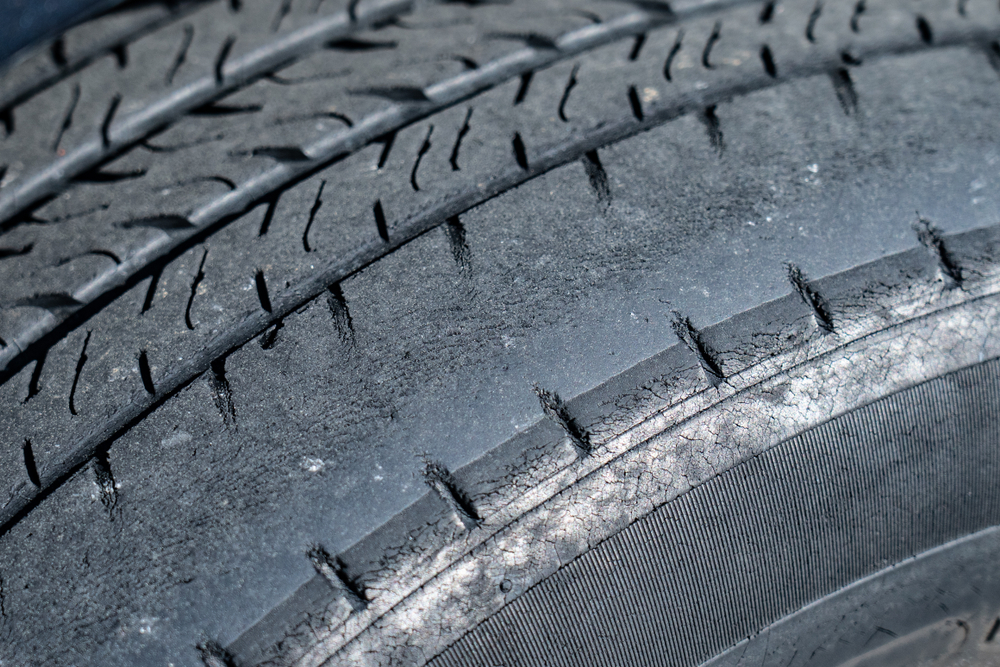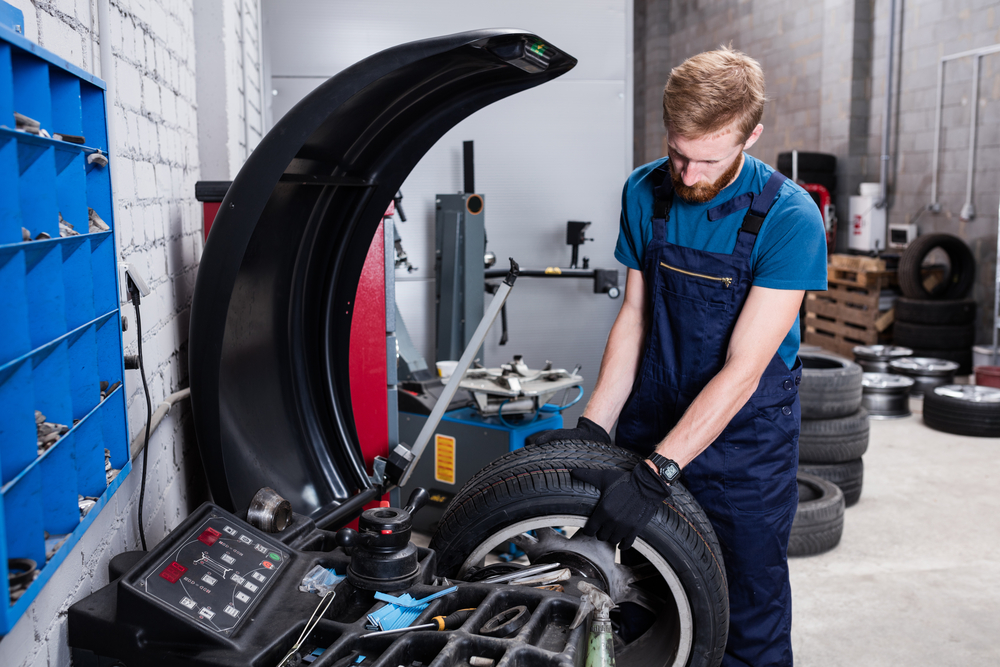If you ever experience heavy vibrations when driving your car or notice uneven tread wear, you could require a wheel balancing.
Sure, these concerns could be caused by other issues, including worn brake pads or warped rotors, but balancing your tires could solve the problem without breaking the bank. For that reason, it’s recommended that you have your wheels balanced first before trying other solutions.
The good news is that every mechanic shop in the country has the machinery necessary to balance your tires, so you won’t have to search far for the service.
Here’s a look at how your mechanic will balance your wheels along with how much this quick and easy service will cost you.
How a Wheel Balancing Works
You’ve probably heard the term wheel or tire balancing before, but do you know what it actually entails? Unfortunately, this is a job that many car owners ignore, leading to performance issues with their vehicles.
The gist is that a wheel balancing ensures that all four of your tires rotate evenly at all times. The result is tires that wear more uniformly, extending their lifespans. A wheel balancing can also prevent one or more of your tires from wobbling, which could lead to vibrations as you drive.
The job of balancing your wheels involves installing small weights on your rims. These weights ensure that each tire has the correct balance and isn’t heavier in one spot or another, helping ensure a smooth ride.
The issue is that over time, these weights require adjustment. A trained mechanic will often use a machine to ensure that all four tires are balanced and adjust the weights accordingly when they aren’t even.
To complete the job, the mechanic will put the mounted tire on a tire balancing machine. This machine spins and measures the vibrations present during the rotation. A built-in computer provides a readout letting the technician know if the tire’s weight is distributed evenly.
In most cases, the mechanic will adjust the existing weights to even things out. However, there are situations where more weight is required to make the tire even. There’s also a chance that the tire needs to be remounted to distribute the weight more evenly.
This process sounds complicated, but it only takes an experienced technician a few minutes to have your tires balanced and back on your vehicle.
Reasons Why a Wheel Balancing Is a Good Idea

Overall, a wheel balancing isn’t an essential service for your car. It isn’t like an oil change where failing to complete the job on a regular schedule could lead to engine wear and shorten your vehicle’s life. That said, a wheel balancing can improve the performance, comfort, and durability of your vehicle.
Comfort
Balanced tires perform better because they prevent vibrations and tire wear.
As you accelerate, you could notice that your car shakes. This rocking could mean that you have unbalanced tires. This issue could impact your safety because a shaking car is more challenging to control, particularly as the problem worsens.
The faster you drive, the worse the vibrations will get. Keep in mind that if you experience vibrations in the steering wheel, the problem is likely with the front wheels, while vibrations in your seat signal unbalanced rear tires.
Traction
Next, balancing your wheels will provide better traction as you drive. This additional traction gives you more control over the vehicle, helping keep you safe. A car that’s vibrating becomes more challenging to handle, particularly in icy conditions or poorly maintained roads.
You could also find yourself getting better gas mileage with balanced tires, resulting from a smoother ride and more efficient handling.
Durability
Finally, you’ll notice that property-balanced tires last a lot longer, saving you money. Tires are expensive to replace, so if you can get a couple more years from yours, the balancing will pay for itself and then some.
The benefits of balancing your wheels far outweigh the hassle and cost because completing this job will provide you with a more comfortable ride and save you some cash.
Why Tires Unbalance

Your tires can go out of balance for many reasons, but it’s rarely the fault of the driver. In most cases, it has to do with the quality of the roads you’re driving on, as rough or bumpy roads can throw your wheels out of balance.
You could also end up with unbalanced wheels if your tires have a minor defect or if they weren’t installed properly in the first place. One small mistake during the initial mounting could throw the tires out of balance and cause issues until you have the problem repaired.
There’s next to nothing you can do to prevent your tires from unbalancing, but keeping up to date on a regular maintenance schedule ensures that the problem doesn’t cause you serious issues in the future.
When You Should Have Your Wheels Balanced
You likely don’t want to wait for your car to begin vibrating before you have your wheels balanced, so figuring out how often to have it done is an excellent step to take.
Typically, you’ll want to have your wheels balanced every 5,000 to 7,000 miles or so, at about the same interval as your regular tire rotation. You can also opt to have your tires balanced whenever you remove them for the season. So, if you put winter tires on in the late fall, you can have your summer tires balanced at that time and vice versa.
At worst, it’s a good idea to balance your tires every two years, even if you aren’t experiencing any noticeable issues.
How Much a Wheel Balancing Will Cost You

Before taking your vehicle to the shop, you’ll want to learn how much the job will end up costing you. The good news is that this is an inexpensive bit of maintenance that makes a massive difference to your car’s handling.
For the most part, a wheel balancing will cost you between $15 and $80. Some tire shops include this service when you buy tires directly from them, but it’s usually only applicable to the initial balancing. If you need your wheels balanced later on, you’ll have to pay for it yourself.
Of course, the exact price you’ll pay depends on the make and model of your car and where you take it, but as a general rule, you should never pay more than $100 for a wheel balancing.
Overall, your wheel balancing won’t cost you much, and the benefits far outweigh the modest expense you’ll encounter.
Taking Your Car to the Shop for a Balancing

Pretty much every mechanic in your area can balance your tires. You can also take your vehicle to an oil change shop or a specialty tire store to get the job done. This job is quick and easy for experienced mechanics, particularly those who have the necessary equipment on hand.
You’ll probably require an appointment when taking your car to a mechanic, but tire shops and oil change garages often have walk-in tire balancing available.
Have a look at the services available in your area because there’s a good chance there’s a walk-in place where you can have your tires balanced in under an hour.
Balancing Your Tires Yourself
It’s also possible to balance your tires at home. It’s often tempting to try home repairs on your car because it’ll save you some money and save you from having to make an appointment.
However, unless you might the tire balancing machine in your garage, the job becomes far more complicated than it’s worth. These machines give an exact readout of where the tire is unbalanced, making rebalancing a simple process.
In addition, the machine will cost you some money, so it’s probably more cost-efficient to take your car to the mechanic for a balancing every few years. Without this machine, the job becomes far more challenging because it involves a lot of trial and error. To start, you’ll have to take all the weights off the tire and drive it for a short distance, feeling for vibrations.
When there are vibrations, it means you have an unbalanced tire, so you’ll add some weight at the 12 o’clock position to see if it helps. If the weight doesn’t fix the problem, you’ll move it to another part of the tire and repeat the process until you no longer feel vibrations.
As you can see, manually balancing a tire will take some effort and is only worth it if you’re committing to avoiding the mechanic shop.
Final Thoughts
A wheel balancing is one of the most effortless pieces of maintenance you can do for your car because it only takes a few minutes for your technician to complete. At the same time, it can extend the life of your tires, provide you with a smoother ride, and save you long-term money on fuel costs and tire replacements.
Overall, it’s a good idea to have your wheels balanced every 5,000 miles to ensure even wear and to keep your vehicle operating smoothly every time you take it on the road.


